
There are two schools of thought when it comes to amplifying sound. One group just wants to listen to their music, or sounds, as cheaply as possible. The other group are more concerned by the quality of those sounds. This is the age old “quantity versus quality” debate by just another name.
When listening to your sounds, how important is the quality of the sound to you? Do you want to hear rich tones, and possibly even instruments, that you never knew were there?
Do you want music that is crisp, and as free of possible distortion, as you can get? Unlike a famous breakfast cereal, you really do not want to be able to hear snaps, crackles and pops, when listening to your music.
When people want to listen to music, with all the richness and quality of tones of a live performance, they will usually choose to use a tube amplifier to get the best quality sound they can. This article will give you some information about Tube Amps and why we think they are pretty awesome.
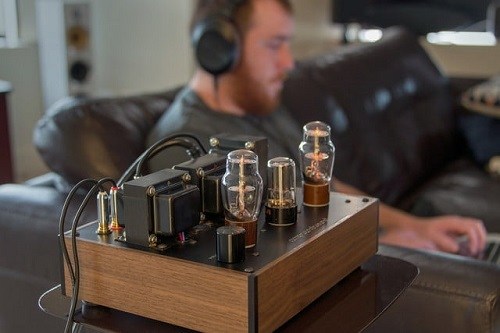
What Is A Tube Amp?
As you no doubt know, amplifiers are used to increase the “volume” (or amplitude) of an electrical signal. What ever device is used to produce the source sound, will then have the electrical signal passed through an amplifier, in order to increase (more correctly known as “amplify”) the signal.
This outputted signal will then be passed on to the speakers, allowing what was potentially a very low output signal voltage, to be significantly increased. Ideally amplification will do so without losing any of the information contained in the original signal and with minimal distortion of the original information.
When it comes to the amplification of sounds and music, there is generally only two types of electrical/electronic devices available to amplify the signal. The most common types of amplifiers available today will generally be solid-state amplifiers. The less common type of amplifier, which is none the less becoming increasingly popular is the tube amplifier.
Many electronic devices today are made using transistors. Whether it’s your phone, or some item of household electronics, the chances are that it works through the transformational power of the humble solid-state transistor.
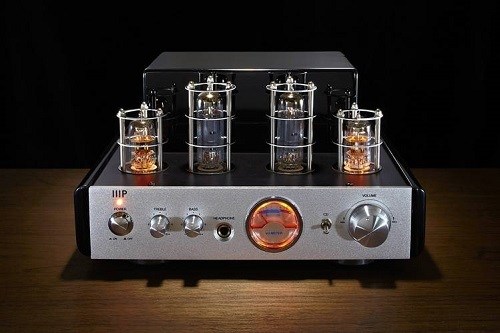
While some tube amplifiers will also use some integrated circuits in their construction, to control a range of different processes, a tube amplifier uses tubes, rather than transistors, in their circuitry to amplify the sound signal.
This is essentially the difference between digital and analog signals. A transistor amplifier will produce a discrete digital type of signal, which can mean that some information is lost, when the signal is being produced.
A tube amplifier on the other hand will produce a more continuous type of signal, ideally resulting in less loss of information from the original signal.
History Of The Tube Amp
The use of tubes in amplifiers, whether incorporated into a radio, or as a separate part of a sound system, has its origins in the first half of last century. The first tube was invented in 1904, by an English engineer named John Ambrose, who at the time worked for the Marconi Company.
History buffs will no doubt recognize the name of Marconi; who is widely regarded as being the inventor of radio. It was not until the invention of the transistor, in 1947, that amplifiers were able to be made using transistors.
During the 1960’s and 1970’s the use of transistors in electronics, including amplifiers, became popular, in part due to their life-span, smaller size and greater hardiness.
The use of solid state electronics by NASA at that time, in the space race, also helped its popularity, since if it was good enough for NASA, well… You get the idea. The transition from tubes to transistors, was the natural progression of progress, and as such was understandable.
Where tubes were common in the 1960’s, they were generally considered obsolete by the end of the 1970’s. After all, why would people use a more expensive technology with a shorter life span, and more easily damaged; when the wonder of transistors was available. Just as cars replaced the horse and cart, so too did transistor amplifiers replace the tube amplifier.
But then something unsurprising happened…Technology got better.
In the 1970’s, output audio sources were very poor quality. Snap, crackle and pop was normal. Background noise and other distorting sounds were common. A speaker might be made using simple paper cones. Eventually all of this changed.
Eventually the quality of the output sound got better. Recording equipment, speakers and output equipment all got better. Suddenly the subtle, parts of the music that once had been little more than indiscernible background noise, could be heard.
Instruments that once might have disappeared into the background, were now being individually identifiable. Audiophiles and music lovers everywhere were starting to hear music the way artists intended it to be heard. The effect that amplifiers had upon the quality of the sound started to become noticeable.
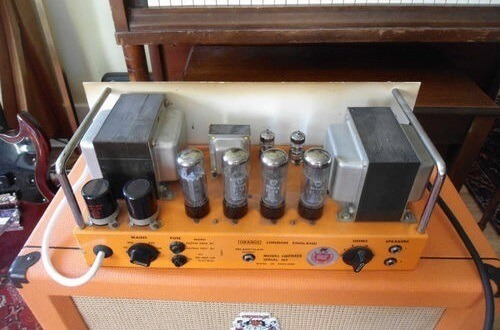
People began to find that there was a richness and warmth of tone in the music when played through a tube amp rather than a solid-state amp. Where the solid-state amps were making music sound cold and lifeless, a tube amp was adding to the experience, making it better.
It was then that audiophiles and music lovers started a resurgence in the popularity of the tube amp.
Differences Between Tube Amplifiers And Solid-State Amplifiers
Here is a list of some of the key differences between tube amplifiers and solid-state amplifiers.
Advantages Of Tube Amplifiers
- Linearity of the electrical paths in tubes results in minimal distortion in circuits, without negative feedback
- Able to tolerate electrical and thermal overloads for minutes, which would almost instantly destroy many transistors
- As the circuit begins to be overloaded, the signal is clipped more gently, whereas a transistor will simply cut it off
- Distortion produced by tubes will generally be more esthetically pleasing to the ear, than distortion produced by solid-state amplifiers
- The higher voltages used by tube amplifiers means that they will generally produce a wider dynamic range
- Tube amplifiers can be easier to maintain, and find replacement parts for, as they age. This is due to parts being generally more available for older tube amplifiers than their equivalently aged, transistor counterparts
Disadvantages Of Tube Amplifiers
- Tube amplifiers generally are heavier, and take up more space, than their equivalent solid-state counterpart
- A tube amplifier will generate significant amounts of waste heat due to the greater voltages being used
- Tubes are more susceptible to damage from physical shocks than transistors
Advantages Of Solid-State Amplifiers
- Transistors require less power to operate and are more efficient as a result
- Transistors, being tinier in size than tubes, will be able to create the same output amplification for less space than their tube counterparts
- Multiple transistors can be combined into an integrated circuit
- Transistors are less susceptible to vibration damage than tubes
- Transistors potentially have a very long life; in some cases, decades
Disadvantages Of Solid-State Amplifiers
- Solid-state amplifiers are more prone to damage from electrical and electromagnetic shocks
- Clipping of the signal will be harsher than their tube counterparts
- The ongoing development of transistors and integrated circuits, means that replacement parts for older solid-state amplifiers may be very difficult to find. It would be like trying to find parts for one of those old brick type cellphones today
- Generally, the quality of the amplified sound will be harsher and more sterile than its tube counterpart
Comparison
It is important to note that there are some obvious, even clear, advantages to solid state amplifiers over tube amplifiers; particularly where cost, robustness and size are concerned.
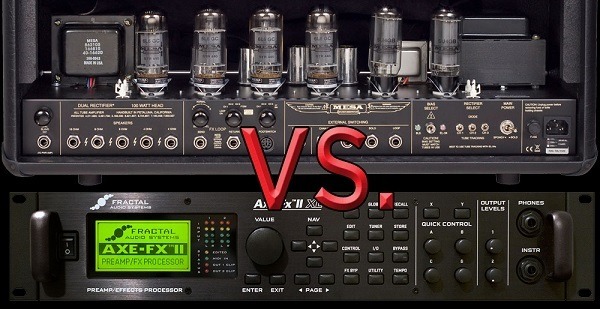
Generally, a tube amplifier will be heavier, more expensive and more fragile than a solid-state amplifier. When doing a basic comparison there may seem to be little reason to use a tube amplifier.
Yet audiophiles and music lovers everywhere use tube amplifiers, and for very good reasons.
Why People Still Use Tube Amplifiers Today
There are several reasons why music lovers and audiophiles everywhere, prefer the use of tube amplifiers, in spite of some of the obvious advantages of solid-state amplifiers.
Distortion
Ultimately, whether you use a solid-state amplifier or a tube amplifier, the sound may be distorted by the very process of amplification itself.
Indeed, based purely on a lab test comparison, some tube amplifiers will distort the sound more than a solid-state amplifier.
Here is the funny thing, though. The nature of the distortions produced by tube amplifiers will generally enhance the sound of the music being amplified, whereas a solid-state amplifier may degrade the quality of the sound.
Even Order Harmonics Vs. Odd Order Harmonics
One type of distortion that can be found when using a tube amplifier is what is known as even-order harmonic distortion. As even-order harmonics will be precisely whole octaves different from the original sound wave, this produces a rather pleasing choral harmony effect, which will be added to the background of the original sound, helping to produce that warmer tone that people talk about.
Solid-state amplifiers on the other hand can produce more of the odd order harmonics, which will provide a more jarring, or “cut-off” sound.
Transients
A transient, in acoustics, is essentially a loud sound that is produced for a short period of time. Tube amplifiers seem better able to handle these transients in the audio signal, as tubes will generally transition better with these rapid changes in volume than a solid-state amplifier is able to.
Clipping
When the output signal exceeds the maximum output voltage available for an amp, the output signal will only be amplified up to the maximum capacity of the amplifier. Generally, clipping by a solid-state amplifier will kick in automatically once this threshold is reached. This can produce a harsh cut-off quality to the sound.
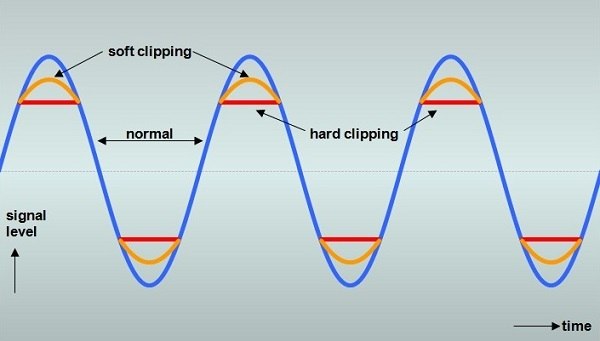
A tube amp on the other hand will gradually transition its clipping, meaning that clipping in tube amps will not sound as harsh.
At a certain output volume, clipping will occur no matter what type of amplifier is being used. The main advantage of the tube amp over the solid-state amp is that the analog transition found in tube amps, will often be easier on the ears.
Can The Sound Of A Tube Amplifier Be Emulated?
There are three different ways in which a person could try to emulate the sound of a tube amp.
Firstly, some people will use the likes of a pre-amp, feeding the output into their solid-state amplifier. This will add some of that “tube sound” quality to their solid-state amplifier, however this will be a very poor substitute, as the actual amplifier is still a solid-state amp.
Secondly, there is software available that can mimic some of the sounds and tonality of tube amps, but this is not intended for home audio systems, rather just for having a computer produce sounds, that are similar to the “tube sound”.
Thirdly, some of the characteristics of tube amplifiers could be made using solid-state componentry. Ironically this is not usually done in practice, so the expense of any such device would be in excess of what you would pay for a comparable tube amplifier, that produced the genuine “tube sound”.
Ultimately, it would be possible to emulate some of the tonality and qualities of a tube amplifier, but almost certainly at greater cost than if you were to use the comparable genuine tube amp.
We don’t know what your thoughts and opinions are, but paying money to make a solid-state amplifier emulate the sound of a tube amp, does beg the question of why not just get a tube amp in the first place. After all, if you want the “tube sound” would it not be better to have the genuine “tube sound” rather than some poor imitation?
Common Tube Amp Problems
There are several problems that people find can occur with their tube amp. Just like any other electrical/electronic item, things can sometimes go wrong. While some problems will be more complex than others, generally we will only be considering problems that could be easily identified at home.
Here is a list of some of the more common basic problems that can occur. One of the advantages of buying a new tube amp is that you are less likely to come across these problems.
It Seems Dead
Nothing could be more frustrating than anticipating your favorite sounds rolling out of your speakers, only to have your amp showing no signs of life. Not a peep. No lights, nothing. We hope that the problem is not one of the classical mistakes that some people will make, like forgetting to plug the amp into the power, or failing to turn the power switch on.
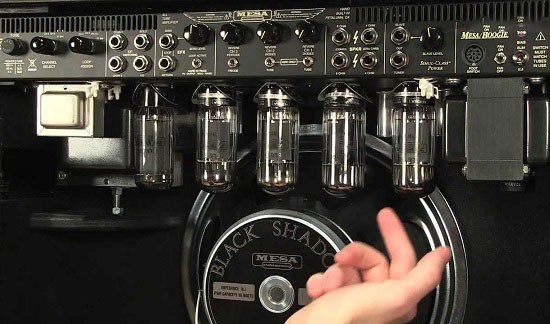
Assuming that you have actually checked these “obvious” things, there are many possibilities that could be causing the problem. Once the power has been turned off again, we would suggest that you check the tubes, the fuses and the power supply.
Lights On But Nobody’s Home
There could be several reasons for an amp to be fully powered on, but have no sound issuing forth. Some of the embarrassingly obvious things that you will already have hopefully checked are whether cables have been plugged in properly, or alternatively have been plugged into the wrong socket.
After checking that the cables have been connected properly, there are several possible reasons that your amp may not be making the sounds you expected. Some of the common problems may be due to a faulty connection jack or faulty tube.
Bad Tube/s
Tubes will generally have a shorter lifespan than most solid-state transistors. The actual lifespan of the tubes will vary greatly and be dependent upon how often the amp is used and at what power/ volume levels it is being used.
One of the most common causes for problems with a tube amp is likely to be due to a faulty or dead tube. This is probably why many “tube aficionados” recommend checking the tubes first, whenever there is a problem – no matter what the problem is.
Dirty Jacks
When plugging jacks regularly into the sockets of the amp, there is a possibility that a dirty jack will result in a poor connection.
This will generally not be a problem for a home stereo system, as most people would have their systems permanently set-up. If you are setting equipment up for the first time in a while, then checking the cleanliness of the jacks could be worth considering.
Faulty Components
There is very little that lasts forever. Eventually, no matter how good something is, eventually a component will fail. This is inevitable. Depending on the nature of the component, it may need to be replaced. One of the satisfying things about tube amps over solid-state amps is that the technology of tube amps, has largely become frozen.
In ten or twenty years’ time it will still be possible to find parts for and fix a faulty tube amp. With the constant changes in solid-state electronics, it would probably be a miracle if you found s replacement part in twenty years’ time. Imagine trying to fix a cellphone from the late 90’s. Same problem.
Filter Caps
The big electrolytic capacitors inside the amp, can also sometimes fail, especially in an older amp. Should you have a fault occur like this occur, you will probably want to take it to a specialist to fix.
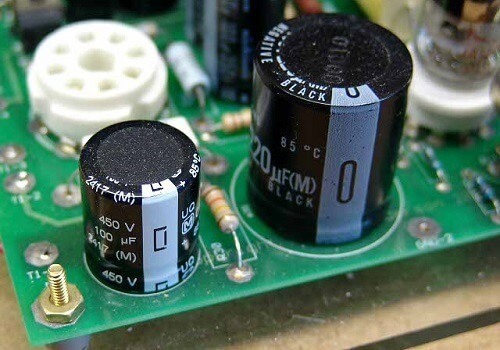
Excessive Hum Or Hissing
While there can be several possible causes for excessive hum or hissing, the most likely cause will be due to a faulty tube.
Tube Amp Repair And Maintenance Tips
As with all pieces of electrical equipment, you should always be careful, when using, repairing or maintaining it. A mistake could be fatal.
It is especially important to be aware that some of the capacitors, in the amp, can store charge even after it has been unplugged. In some cases, this charge could linger a matter of days, so never assume that just because it is unplugged it must be safe.
While some repairs and maintenance can easily be done by yourself, at home, if it involves anything major involving electrical components, you are better getting a professional to fix it. After all, you can only die once; so be safe.
Before Use
Let the amp warm up before you start to use it. If it has a main power switch and a standby switch, make sure that you turn the power switch on several minutes before turning the standby switch on.
If you are replacing tubes make sure that you are doing so, with similar types of valves. Not just in terms of the correct number of pins, but also in terms of the pin placement and voltages. If the tubes do not fit the tube base correctly, you risk turning your amp into junk.
During Use
If the quality of the sound seems to be worse than, you remember it being in the past, it is possible that one of your tubes is on the way out. A tube does not have to be dead, just for it to make a bad sad. Tubes can get old and tired too.
This can easily be fixed by replacing each tube (one at a time) with a new one, and seeing if there is an impact on the quality of the sound. There should be a noticeable improvement in the quality of the sound when a tired tube is replaced with a good tube.
After Use
If you are planning on moving your amplifier, make sure that it has been off and has cooled down for at least ten to twenty minutes before moving it.
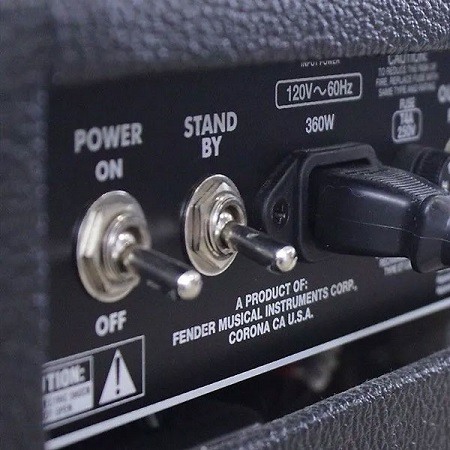
Don’t store your amplifier in a location that could get damp. Moisture and electronics are not a good mixture, especially if you want them working.
Some tube amps will be quite heavy. Do NOT drop the tube amp, if you are carrying it, unless you do not mind if it stops working. Tube amps will not handle rough and tumble, so treat it with respect.
Conclusion
There is something truly magical about the quality of the sound and tones produced using a tube amp over a solid-state amp.
While some people will attempt to replicate these sounds using solid-state technology, nothing beats the genuine “tube sound” that can only be obtained from a genuine tube amplifier. Why not find out for yourself just how rich and warm the tones can be.
